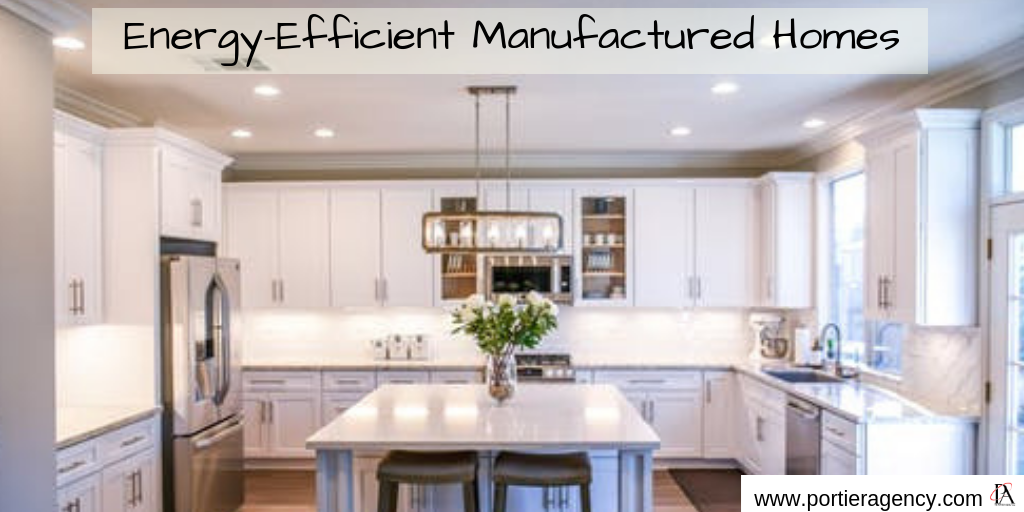Energy-Efficient Manufactured Homes
Energy-Efficient Manufactured Homes
Like site-built homes, new manufactured homes (formerly known as mobile homes) can be designed for energy efficiency and renewable energy. You can also remodel or retrofit older manufactured homes to improve energy efficiency and/or add renewable energy equipment. Manufactured homes are built in a factory on a permanent chassis, then transported to a building site and installed.
Manufactured Home Energy-Efficient Retrofit Measures
There are many differences between manufactured (mobile) homes built before the U.S. Department of Housing and Urban Development (HUD) Code took effect in 1976 and those built afterward. If you have a pre-1976 manufactured (mobile) home, you can make the following energy efficiency improvements to reduce heat loss:
- Install energy-efficient windows and doors
- Add insulation to the belly
- Make general repairs (caulking, ducts, etc.)
- Add insulation to your walls
- Install insulated skirting
- Install a belly wrap
- Add insulation to your roof or install a roof cap.
Experiments conducted on pre-1976 manufactured homes by the National Renewable Energy Laboratory (NREL) from 1988 to 1991 found that these retrofit measures resulted in a 31% reduction in heating fuel usage.
There are three common methods used to add roof insulation to the existing cavity: drilling and tube blowing from the inside, drilling and tube blowing from the top, and rolling back the roof and blowing into the now open cavity. Instead of filling the existing cavity, some installers prefer to use roof caps for insulating.
Although the insulating performance of roof caps is inferior to blown-in insulation, they come in kits that include insulation boards (usually of dense fiberglass) with a synthetic rubber or metal covering. Roof caps can insulate the roof to R-19 without disturbing the existing roof, and if all leaks in the old roof covering are sealed, the old roof acts as a vapor retarder, eliminating moisture problems and the need for ventilation. Be aware that rolling back the roof to add insulation can lead to realignment problems and leaks, necessitating mechanical ventilation to alleviate moisture condensation problems in the roof cavity.
Blowing loose-fill insulation into an existing manufactured home is difficult because of the narrowness of the wall and roof cavities. Pre-1976 home walls often have only 2-inch by 2-inch studs (5.08 cm × 5.08 cm) (new manufactured houses are required to have at least 2-inch by 4-inch [5.08 cm × 10.16 cm] studs), and roof trusses complicate the process of adding more roof insulation.
Blowing insulation into wall or ceiling cavities and/or installing roof caps is a job for a trained professional with proper equipment. Neither activity should be attempted by even the most capable do-it-yourselfer, as permanent structural damage and/or personal injury could easily result. A good source for a recommendation of a capable contractor-installer would probably be the Weatherization Department of your local Community Action Agency.
To further improve your manufactured home’s energy efficiency, consider:
- Caulking and weatherstripping windows and doors, especially if you can’t replace them with more energy-efficient ones
- Air sealing any openings around plumbing fixtures and ducts
- Using energy-efficient lighting and appliances.
Manufactured Home Renewable Energy Applications
You can use renewable energy to provide electricity, heating, and cooling for your manufactured home. Renewable energy systems not only lower energy costs, but also reduce[…]
# # #
Continue reading this article.
Don’t forget, The Portier Agency offers:
homeowner/mobile home/ renter’s /automobile / motorcycle / life / commercial / crop insurance.
Call or come by to get your quote!
 The Portier Agency, LLC
The Portier Agency, LLC
113 North Irwin Avenue
Ocilla, GA 31774
229-468-3444
portieragency@windstream.net
